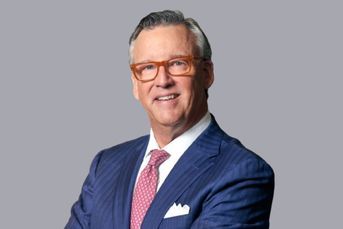Ascensus hits $1B mark in state auto-IRAs

The number of programs across the country has been rising, expanding retirement account coverage to many workers.
One company oversees 75 percent of the relatively small but growing state automatic IRA market, which now represents more than $1.3 billion.
This week, record-keeping company Ascensus disclosed that its assets under administration had reached $1 billion across the two state programs it administers: CalSavers and Illinois Secure Choice. At $821 million as of February, CalSavers is by far the largest such program, followed by OregonSaves at $261 million, according to data from the Center for Retirement Initiatives at Georgetown University.
Since the first program, OregonSaves, launched as a pilot in 2017, the number of accounts has reached nearly 850,000 across the six auto-IRAs that are up and running. Last year, about half of all US states explored adding such programs, and three, in Minnesota, Nevada, and Vermont, were enacted. Most recently, an auto-IRA for Washington state was signed into law at the end of March.
In total, 16 states have programs that are in some stage of development, if not already live, according to Georgetown CRI.
The programs generally require employers that don’t already offer retirement plans to enroll employees, in an effort to address the lack of employer plans at small businesses. States began developing their own auto-IRAs after efforts by the Obama administration to pass a federal auto-IRA didn’t come to fruition.
“Hitting $1.34 billion is a great statement about the power of these state efforts. Given its population and program thresholds (that is, firms with one employee), it is no surprise that California accounts for almost 61% of the assets. Its dominance will just continue to grow as more accounts are funded,” Andrea Feirstein, managing director of AKF Consulting Group, said in an email.
The newest program, Colorado’s SecureSave, launched in 2023 and now includes about 50,000 funded accounts, according to Georgetown CRI. The state learned from other programs, like California’s and Oregon’s, which had longer rollout periods that gradually expanded to smaller and smaller employers, Feirstein said.
“Shortening the enrollment waves has accelerated program participation, which we believe accounts for the rapid growth,” she said. “With Maine and Delaware officially joining the Colorado partnership, we also expect to see accelerated growth in the future. We love that the partnership model is taking hold as it enables smaller states to launch programs more successfully than they might have on their own.”
Like Colorado, Maine hired plan provider Vestwell, which has dominated the auto-IRA business in terms of new contracts over the past several years. That company and its backers have alluded to the potential in the state auto-IRA market, which is very young compared with employer-sponsored plans like 401(k)s. Last year, the company brought in $125 million in its Series D funding round.
Retirement savings gap persists despite bull market, Ascensus CEO says
Learn more about reprints and licensing for this article.








